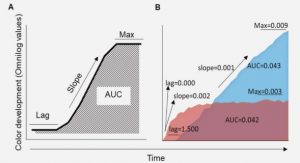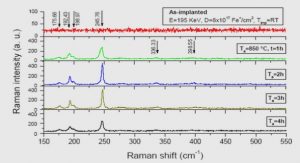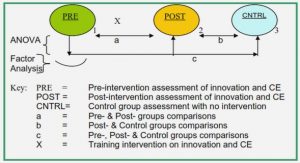Get Complete Project Material File(s) Now! »
Literature Study
The first person to publish a BCG circuit design for an off-the-shelf weight scale was Williams in 1990 [19]. While the goal was to weigh human subjects with a very high accuracy, it was also noticed that the acceleration of the blood moving in the arteries showed up as a change in weight each time the heart of the subject pumped [19]. The circuit design consisted of a set of strain gauges (resistors that change resistance when pressure or force is applied) in a Wheatstone bridge configuration, a differential input amplifier and some filter stages. The total gain and bandwidth were not disclosed.
Whereas Williams mainly considered the BCG signal as undesired noise, González-Landaeta et al. [38] intentionally designed a BCG acquisition circuit a few years later. Their design included a Wheatstone bridge, an ac-coupled differential amplifier with a gain of 1000, a first-order low-pass filter with a cut-off frequency of 10 Hz and a second amplifier with a gain of 75. This set-up led to a total gain of 98 dB and a bandwidth of 0.1 Hz – 10 Hz. Consistent BCG signals were obtained for 12 volunteers with this set-up.
The most detailed description of a BCG acquisition circuit was given by Inan et al. [30,39]. The set-up, largely based on the design by Williams [19], consisted of four strain gauges, configured as a Wheatstone bridge, and an analog circuit. The analog circuit included an instrumentation amplifier, a second-order low-pass filter and a non-inverting gain stage. ac-coupling was used to attenuate the dc-component of the weight. The resulting gain was equal to 81 dB, with a bandwidth of 0.1 Hz – 25 Hz. This system has been thoroughly and frequently tested since its first publication.
Scale Selection
The BCG acquisition circuits mentioned in the previous section were all interfaced with a stand-ard weight scale. The first step in the design of a custom BCG circuit was therefore the construc-tion or selection of an appropriate scale. Developing a custom structure involved issues such as sensor alignment, platform stability and cost. Instead of performing this difficult and time-consuming task, an off-the-shelf weight scale was selected as the basis for this work. Following the lead of Inan et al. [30], a scale from Tanita was chosen, the BC-551 [40].
The BC-551 is a standard weight scale that also includes four electrodes for the measurement of bone mass, muscle mass and body water percentage through bioelectrical impedance ana-lysis (BIA). The scale has a liquid-crystal display (LCD), four buttons to personalize the measurements, one on/off button and a switch to select the unit for the weight. The entire device is powered by two 3 V CR232 batteries. The BC-551 has a weight capacity of 150 kg and the smallest measurable weight increment is equal to 100 g [41]. Figure 2.1 shows a picture of the scale prior to modifications.
The sensors used to measure the weight of the person on the scale are strain gauges mounted on beams inside the supports. There are four supports and the four strain gauges are configured as a Wheatstone bridge. The four electrodes on the top surface of the scale (see figure 2.1) are made of an electrically conducting transparent coating. Each corner of the scale has one electrode to allow both current injection and measurement during BIA. The two lithium batteries of 3 V are connected in series, which doubles the voltage, but maintains the current capacity at about 210 mAh. All buttons are simple push buttons, but the unit selection switch is a single-pole triple-throw switch that allows the selection of three different units.
Circuit Design
During this thesis work, a custom amplification and filtering circuit was developed, based on the design by Inan et al. [39]. This design was selected as the basis for this work due to the details provided and the success achieved so far. The custom circuit for a single strain gauge consisted of the following stages:
1. Wheatstone bridge.
2. Instrumentation amplifier.
3. Low-pass filter.
4. Non-inverting amplifier.
EMG Circuit
As acknowledged by Inan et al. [42] during the discussion of the ECG transimpedance amplifier, the same topology can readily be adapted for EMG acquisition. The EMG acquisition circuit can use the same electrodes and design as the ECG acquisition circuit, apart from minor changes to the T-network and the low-pass filter stage. The T-network is changed to increase the gain of the circuit, as required by the lower signal amplitude of the EMG signal compared to the ECG signal (see section 1.3). The changes in the low-pass filter stage increase the bandwidth for a better match with the bandwidth of the EMG signal (approximately 10 Hz – 5 kHz, see subsection 1.3.3). The total gain of the circuit is equal to 62 dB, while the bandwidth is set to 0.8 Hz – 100 Hz. MacSpice 3f5 simulations corroborated the calculation results. An isolation amplifier is once again required, using a separate power supply ( 9 V battery set) for the output stage.
Circuit Design
The three final requirements from section 5.1 were converted into preliminary designs of separate circuits that could be used as desired for the different acquisition circuits. Subsections 5.2.1 and 5.2.2 focus on the boost and inverter circuits, respectively, while the final subsection examines the design of the isolation circuit.
Boost Circuit
If the internal batteries (BAT ) are selected, the 6 V input voltage has to be boosted to 9 V. The external power input of 9 V (PWR) does not require boosting, but to simplify the circuit and avoid an extra switch, it is nevertheless connected to the boost circuit. A schematic of the boost circuit is shown in figure 5.1.
BCG Circuit
The BCG circuit had to be tested to confirm that it could record the forces exerted onto the body by accelerating blood. At the time of the first BCG experiment, only two circuits (corresponding to two strain gauges) had been finished due to a limited number of components. For a first test, however, two circuits were deemed sufficient to provide a proof of concept. Strain gauges on opposite corners of the scale were thus plugged into the BCG circuits and Bayonet Neill-Concelman (BNC) cables were used to connect the circuit outputs to a combination of a data acquisition card (National Instruments Corporation, USA) and a computer running LabVIEW 8.2 (Version 8.2.1, National Instruments, 2007). As mentioned in subsection 1.3.1, an ECG signal is required for the correct interpretation of a BCG signal. A standard ECG monitor (Life Scope 7, Nihon Kohden Corporation, Japan) and four disposable Ag/AgCl electrodes in a Lead II configuration (right arm to left leg, see subsection 1.3.2) were used during this test. The ECG monitor was also connected to the computer through the same digital acquisition card.
The simple test protocol, involving a single subject, consisted of standing on the scale for about 25 s. Following data acquisition, the recorded signals were processed using MATLAB R2012a (Version 7.14.0, The MathWorks Inc., 2012). The signals from the two strain gauges were band-pass filtered between 4 Hz and 15 Hz, a bandwidth established after a short literature study and some additional tweaking [30]. The two force signals were then summed and inverted because the reaction force on the scale was recorded instead of the force corresponding to the acceleration of blood. The signal from the ECG monitor did not require filtering. Instead, a simple peak detection algorithm, followed by manual inspection, was used to detect and mark the R waves (see subsection 1.3.2).
Figure 6.1 on the next page presents a plot of the BCG and ECG signals during two heartbeats (two R waves). The different features of the BCG signal, relative to the R wave of the ECG signal, identify it as a correct BCG signal (also see the discussion in subsection 1.3.1). Unfortunately, a correct BCG signal could not be identified for every single heartbeat, but the achieved results were sufficient to prove that the BCG circuit was able to record a BCG signal.
Table of contents :
1 Introduction
1.1 The Human Body in Space
1.2 Continuous Health Monitoring
1.3 Physiological Signals
1.3.1 Ballistocardiography
1.3.2 Electrocardiography
1.3.3 Electromyography
1.3.4 Center of Pressure
1.4 Goal
2 BCG Circuit
2.1 Literature Study
2.2 Scale Selection
2.3 Circuit Design
3 ECG & EMG Circuit
3.1 Literature Study
3.2 Circuit Design
3.2.1 ECG Circuit
3.2.2 EMG Circuit
4 COP Circuit
4.1 Circuit Requirements
4.2 Circuit Design
5 Power Supply Circuit
5.1 Circuit Requirements
5.2 Circuit Design
5.2.1 Boost Circuit
5.2.2 Inverter Circuit
5.2.3 Isolation Circuit
6 Experimental Verification
6.1 BCG Circuit
6.2 ECG & EMG Circuits
6.3 Calibration
6.3.1 Set-up & Protocol
6.3.2 ECG Signals
6.3.3 Center of Pressure
7 Conclusions & Outlook
7.1 Conclusions
7.2 Outlook
Bibliography






